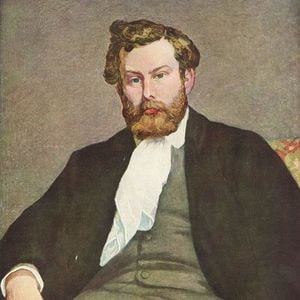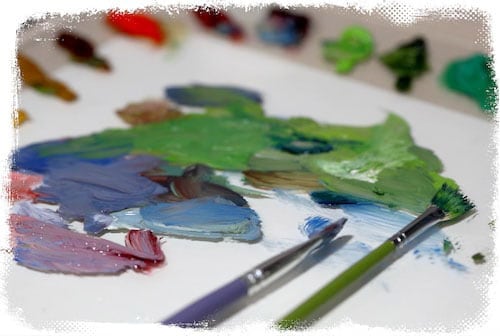
Alfred Sisley
Alfred Sisley
1 to 30 out of 759 items
1 to 30 out of 759 items
Impressionist landscape painting is most closely associated with Alfred Sisley, who is known for creating works rich in atmosphere and inviting the viewer. Sisley was born in Paris to parents from the United Kingdom. Still, he spent most of his life in France, where he collaborated closely with fellow Impressionists Claude Monet and Pierre-Auguste Renoir. The open-air style allowed him to observe and record the natural light of the French countryside more immediately. Therefore he found it more satisfying to paint outside than in a studio. He enjoyed painting outdoors. Sisley traveled to the United Kingdom on multiple occasions between 1880 and 1900, during which time he painted landscapes of the British coastline. This was an odd subject choice for Sisley, given that he produced seascapes in France very infrequently. Because Sisley only spent a short amount of time in the United Kingdom, it is difficult to determine how much John Constable and J.M.W. Turner influenced his work. Nevertheless, some people consider Sisley in the same tradition of British landscapists as these two artists.
Childhood
Alfred Sisley was the son of wealthy British parents who had relocated to Paris. He was born there. His mother, Felicia Sell, was a music enthusiast, while his father, William Sisley, ran a successful firm that exported artificial flowers and silk. His mother was a music lover. Felicia and William were related to one another through their common ancestry as descendants of English smugglers and merchants. One of Alfred's siblings, the eldest brother, passed away when he was still young. Alfred was one of four children. Not much is known about Alfred's youth until he was shipped off to London in 1857 to get an education in preparation for a business career. It is reported that Sisley spent a significant amount of time at the National Gallery of Art in London, viewing the works of John Constable and J.M.W. Turner while in the city.
Early Training
In 1860, Sisley relocated back to Paris and began his studies there at the École des Beaux-Arts. While he was a student in Charles Gleyre's (1806-74) atelier in Paris, he came into contact with several notable artists, including Frédéric Bazille, Pierre-Auguste Renoir, Claude Monet, and James Whistler. "Technique and preparation" was the primary focus of Sisley's academic training, yet, Gleyre significantly contributed to developing the new "impressionist" style. Gleyre instilled in his pupils the skills of drawing from memory and observing nature while emphasizing the significance of being original. Not a single piece of Sisley's schoolwork has been preserved, and just a few of his early works have been identified. When he departed Bougival in the wake of the Prussian invasion in 1870, it is only reasonable to presume that any work he had done before that year was lost. Especially about their concern in color, his earliest paintings that have been preserved bear a resemblance to those produced by the Barbizon school. The Avenue of Chestnut Trees Near La Celle-Saint-Cloud (1867) was painted by him in three distinct versions, the final one being the one that was accepted into the Salon in 1868. These paintings are excellent examples of his early work.
While they spent learning in Gleyre's studio, Sisley and Renoir were excellent friends. Renoir was fond of praising his affable and magnetic demeanor, and he told his son repeatedly, "[Sisley] was a charming human being, and despite his best efforts, he could not say no to a dress. Sisley would vanish as we casually strolled down the street and chatted about the weather or some other equally inconsequential topic. Then I'd catch him engaging in his old hobby of flirting with other people." He had a reputation for being "hardworking and outgoing" among the other students that Gleyre taught.
In 1866 Sisley met a florist named Marie-Louise Adelaide Lescouezec (Eugénie). Renoir remembers thinking that girl appeared to be "very nicely brought up." Her childhood is a mystery, but one narrative indicates that she was coerced into becoming a model by her family's difficult financial circumstances. According to one of the stories that have been told about her childhood, her father, who was an officer, was shot dead in a duel when she was a small girl. Sisley fell in love with her even though she came from a troubled family and remained faithful to her until the day she passed away. One year after the couple first met, their first child, a son named Pierre, was born. In 1869, the couple had their first daughter, Jeanne. Sisley's financial situation deteriorated shortly after the commencement of the Franco-Prussian war in the year 1870. Sisley's father had provided financial assistance throughout his life, but the family firm went bankrupt shortly after the war broke out. After suffering such a devastating loss, his father passed away soon.
Mature Period
After the passing of his father, Sisley devoted himself to painting, and, for the first time in their lives, they were forced to rely on the income generated by his artwork to provide for their family. The development of Sisley's signature style occurred about at the same time. He started to show his true promise as a colorist and his ability to depict nature by using loose brushstrokes. He also began to show his skill in painting landscapes. Sisley's paintings during this time display an astonishing spectrum of tones, and his ability to convey the intricate visual effects of light gives his landscapes a sense of movement and vitality. According to Christopher Lloyd, an art historian, Sisley's compositions are "giving order to a world that is continuously in change" because of how well structured they are. Throughout his career, Sisley painted en Plein air, which involved painting straight onto a primed canvas. He rarely went back into the studio to adjust his compositions.
Even though Sisley's commitment to the Impressionist movement never wavered, the artist's inability to sell his paintings forced him to resume displaying his work at the Salon in the 1870s. Even though the Salon Jury turned down his paintings in 1867 and 1879, they eventually accepted them later in his career. Sisley showed his pictures for the first time in the first Impressionist show in 1874. He could not show his work in an academic atmosphere due to a lack of opportunities. The new group got together at the studio of the photographer Nadar, where Sisley displayed five of her works. Impressionism was a pejorative term when it was first used by Louis Leroy, a critic of Charivari who was present at the event and is credited with its creation. Leroy referred to the artists as "trouble-makers" because they only painted their interpretations of the world around them. Between 1874 and 1890, Sisley maintained a consistent exhibition schedule for his oeuvre. He participated in most Impressionist displays and exhibited his work at other corporate and artistic venues. After meeting Paul Durand-Ruel, a private art dealer, in 1872, Sisley continued to be represented by him until hen Georges Petit took over for him.
End of Life & Later Years
Sisley had lived the majority of his adult life in poverty, and he frequently needed to ask for loans for relatively small amounts of money. More than a dozen times, he moved his family to different locations on the outskirts of Paris, hoping to find more affordable homes. Even though he suffered from emotional pain throughout his life due to the lack of attention he received and the severe financial circumstances he was in, which prompted him to shun social engagements, he maintained his friendliness and popularity throughout his life.
Sisley did not marry his future wife until he was well into his senior years (1897). In October 1898, Marie lost her battle with cancer; soon after, the couple returned to France following their wedding in Wales. In January of 1899, Sisley found himself physically in a precarious state. He asked his close friend Monet to look after his children while he was away and invited him to visit him. e Monet was there and asked him to do so. A week after his diagnosis, Sisley succumbed to throat cancer and was laid to rest in the Moret cemetery. In honor of his legacy, a bust was constructed.
In May of 1899, Claude Monet consented to Georges Petit to organize a charity auction at the Hotel Drouot to benefit the children of Sisley. Petit successfully sold seven of his works, which resulted in the accumulation of 112,320 francs. In addition, Sisley's painting "Flood at Port-Marly" (1876) was sold in March of 1900 for 43,000 francs, which was about half of the total amount received for the sale of all twenty-seven of his paintings the previous year. Even though Sisley did not become famous during his lifetime, many of his contemporaries recognized his brilliance.
The Imprint That Alfred Sisley Left Behind
Sisley is still understudied in contrast to his contemporaries, even though Impressionism was quite popular during his lifetime and did not gain much attention or success in his career. Many people believe that his fragmented national identity is to blame for the lack of severe scholarly treatment given to him. Even though he asked for French citizenship twice and was turned down both times, Sisley maintained his citizenship in the United Kingdom throughout his entire life. Nevertheless, he was a founder of French Impressionism, and throughout his career, he upheld the fundamental principles that had guided the movement from its inception.
The early work of Sisley established a connection between the Barbizon school and the movement that would eventually be known as Impressionism. His creative use of color and texture to evoke emotion formed the cornerstone of the next campaign, Post-Impressionism, even though he was not directly involved in the Post-Impressionist movement.
Most paintings Alfred Sisley did are about Landscape, Cityscape, Seascape, Sketch and Study, House, Boat, Garden, and other subjects.
Most of the artist's works that can be seen by the public today are now kept in museums like Musée d'Orsay, Musée des Beaux-Arts de Rouen, Museum of Fine Arts - Boston, and others.
Famous Alfred Sisley period artists include Pierre Auguste Renoir (French, 1841 -1919), Eugène-Louis Boudin (French, 1824 -1898), Claude Monet (French, 1840 -1926), Camille Pissarro (French, 1830 -1903), Marianne North (British, 1830 -1890), Vincent van Gogh (Dutch, 1853 -1890), Edgar Degas (French, 1834 -1917), Ivan Constantinovich Aivazovsky (Russian, 1817 -1900), Paul Cézanne (French, 1839 -1906), Odilon Redon (French, 1840 -1916), Paul Gauguin (French, 1848 -1903), Armand Guillaumin (French, 1841 -1927), and others.
Get inspired by the most famous paintings of Alfred Sisley. Pick your favorite, and one of our talented artists will make a copy just like the original, making it a unique gift or piece of art for your home. If you can't find a specific Alfred Sisley, contact us for a price quote.






























